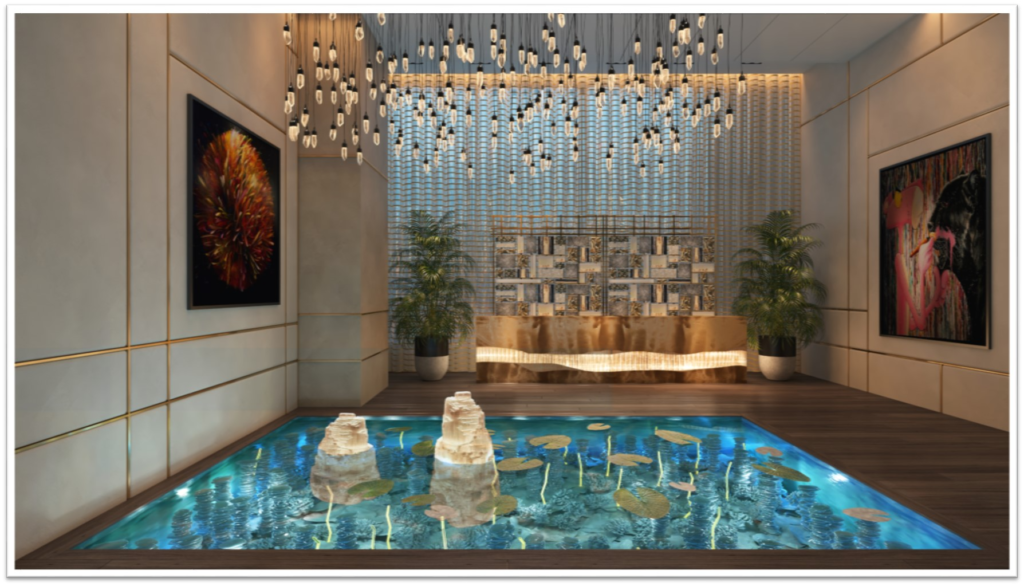When it comes to transforming spaces, two key professions often come to mind: interior design and interior decoration. While these terms are sometimes used interchangeably, they represent distinct roles, qualifications, and career paths. Understanding the differences between interior design and interior decoration is essential if you’re considering a career in this field or seeking professional help for your home or business.
In this blog, we’ll explore the main differences between interior design vs. interior decoration, the qualifications required for each, and how their career paths diverge.
1. Interior Design vs. Interior Decoration: What Do They Focus On?
Interior Design

An interior designer focuses on both the aesthetic and functional aspects of indoor spaces. They are trained to improve not just the look but also the layout and functionality of rooms, considering elements like space planning, structural changes, and lighting. Interior designers often work on projects that require structural modifications or significant renovations, meaning they collaborate with architects, contractors, and engineers.
- Focus Areas: Space planning, ergonomics, structural design, lighting, acoustics, and building codes.
- Goal: To create spaces that are both aesthetically pleasing and functional, enhancing the user experience.
Interior Decoration

On the other hand, an interior decorator is primarily concerned with the look and feel of a space. Their job is to enhance existing spaces by focusing on surface-level changes such as color schemes, furniture, textiles, and accessories. Unlike interior designers, decorators do not typically make structural changes or work on the architectural elements of a space.
- Focus Areas: Color palettes, furniture selection, fabrics, and accessories.
- Goal: To create visually appealing spaces by applying aesthetic elements without altering the layout or structure.
2. Interior Designer vs. Decorator: Qualifications and Training
Interior Designer Qualifications
To become an interior designer, formal education is usually required. Most interior designers hold a bachelor’s degree in interior design or a related field. Some regions also require interior designers to pass specific certification exams such as the NCIDQ (National Council for Interior Design Qualification) to practice professionally.
- Education: Bachelor’s degree or diploma in interior design, architecture, or a related field.
- Certifications: NCIDQ, LEED accreditation, or other regional certifications.
- Skills: Proficiency in design software (AutoCAD, Revit), knowledge of building codes and regulations, space planning, and technical drawing.
Interior Designer Qualifications
To become an interior designer, formal education is usually required. Most interior designers hold a bachelor’s degree in interior design or a related field. Some regions also require interior designers to pass specific certification exams such as the NCIDQ (National Council for Interior Design Qualification) to practice professionally.
- Education: Bachelor’s degree or diploma in interior design, architecture, or a related field.
- Certifications: NCIDQ, LEED accreditation, or other regional certifications.
- Skills: Proficiency in design software (AutoCAD, Revit), knowledge of building codes and regulations, space planning, and technical drawing.
Interior Decorator Qualifications
Unlike interior designers, interior decorators don’t necessarily require formal education or certifications. While some choose to pursue certificate programs or short courses in interior decoration, many decorators enter the field based on their talent and passion for creating beautiful spaces.
- Education: Not mandatory, though certificate courses in interior decoration can be beneficial.
- Certifications: Optional, such as Certified Interior Decorators International (C.I.D.).
- Skills: A strong sense of style, color theory, and knowledge of materials and furnishings.
3. Career Paths: Interior Design vs. Interior Decoration
Interior Designer
Interior designers have a broad career path that extends beyond residential spaces. They can work on large-scale projects such as offices, hotels, hospitals, and commercial spaces. Because they often collaborate with architects and contractors, their job often involves significant structural and functional changes to spaces.
- Job Roles: Interior designer, project manager, space planner, design consultant.
- Work Environments: Design firms, architecture companies, or freelance.
- Project Types: Residential homes, commercial buildings, hospitality design, healthcare spaces.
Interior Decorators
Interior decorators usually focus on smaller projects, often working directly with homeowners or small businesses to enhance the look of existing spaces. Decorators may work as freelancers or be employed by home furnishing stores, design studios, or boutique firms.
- Job Roles: Interior decorator, stylist, home staging professional.
- Work Environments: Freelance, retail stores, interior decoration firms.
- Project Types: Residential decorating, retail spaces, event decor, home staging.
4. Key Differences: Interior Design vs. Interior Decoration
To summarize the key differences between interior design vs. interior decoration, here’s a quick breakdown:
| Aspect | Interior Designer | Interior Decorator |
|---|---|---|
| Education | Formal education (degree or diploma) required | Not mandatory, but short courses or certificates can help |
| Scope of Work | Structural changes, space planning, technical designs | Aesthetic enhancements (furniture, color, accessories) |
| Certifications | Required in many regions (e.g., NCIDQ, LEED) | Optional certifications (e.g., C.I.D.) |
| Collaboration | Works with architects, contractors, and engineers | Primarily works independently or with furniture retailers |
| Project Types | Large-scale commercial and residential projects | Residential, retail, and event spaces |
| Tools and Skills | AutoCAD, Revit, space planning, knowledge of building codes | Style, color theory, and knowledge of materials and furnishings |
5. Notable Interior Designers and Their Work
While interior decoration has its own talented professionals, interior designers have made significant contributions to the field, blending both aesthetics and function. Some renowned interior designers include:
Kelly Wearstler

Known for her bold, maximalist approach, Kelly Wearstler has designed luxury hotels, residences, and commercial spaces. Her unique use of textures and materials has earned her global recognition.
India Mahdavi

Famed for her colorful, eclectic designs, Mahdavi’s work spans residential, commercial, and product design, making her a sought-after name in contemporary interior design.
Conclusion
When deciding between an interior designer vs. decorator, the choice ultimately depends on your needs and the scope of your project. If you’re looking to revamp the look of a space without structural changes, an interior decorator might be the right fit. However, if you need to remodel or design from scratch with a focus on both function and aesthetics, working with an interior designer is the way to go.
Both interior design and decoration offer exciting and rewarding career paths. If you’re passionate about shaping environments, understanding the differences between these professions will help you make an informed choice as you pursue your dream in the design world.
